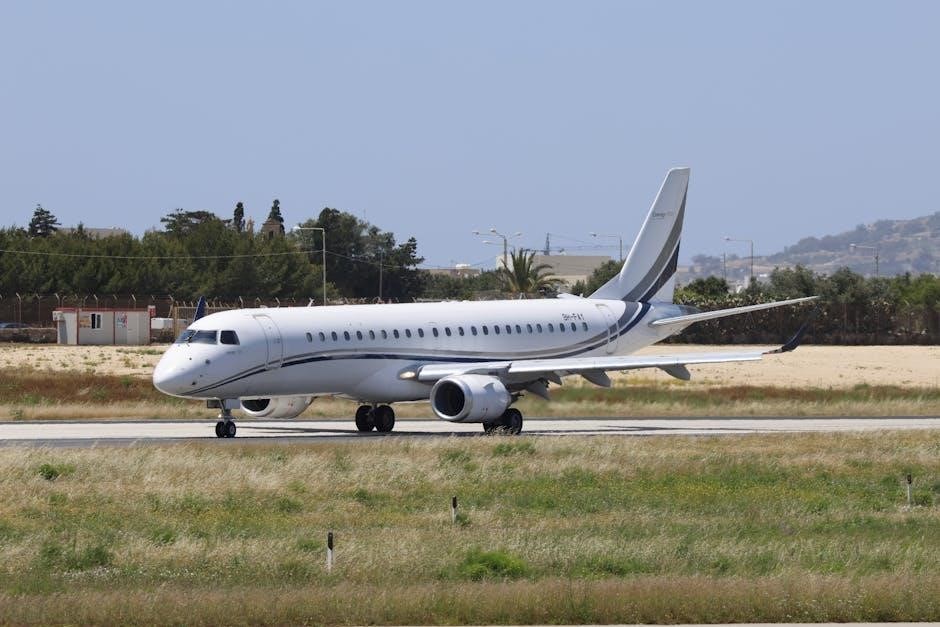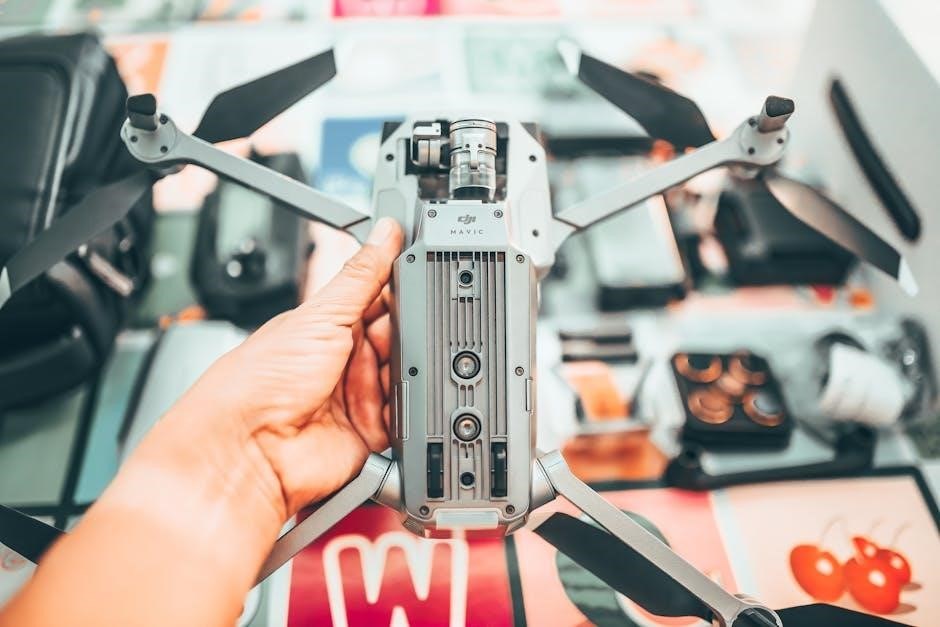The 2014 Honda Pilot manual is a comprehensive guide providing essential information on operation‚ maintenance‚ and troubleshooting. Available as a downloadable PDF‚ it ensures proper vehicle care and safe operation‚ serving as a valuable resource for owners.
Importance of the Owner’s Manual
The owner’s manual is crucial for understanding and maintaining the 2014 Honda Pilot. It provides detailed instructions for proper vehicle operation‚ maintenance schedules‚ and troubleshooting. By following the manual‚ owners can ensure optimal performance‚ safety‚ and longevity of their vehicle. It also serves as a reference for resolving common issues‚ making it an essential resource for drivers. Regularly consulting the manual helps prevent potential problems and ensures compliance with manufacturer recommendations.
Key Features of the 2014 Honda Pilot
The 2014 Honda Pilot offers a robust V6 engine‚ delivering smooth power and efficiency. It features a spacious interior‚ versatile seating for up to eight passengers‚ and ample cargo space. Advanced safety features include a rearview camera and electronic stability control. The Pilot also boasts a user-friendly navigation system and comfortable ride quality‚ making it a practical choice for families and adventurers alike. Its durability and reliability further enhance its appeal as a dependable SUV.

Maintenance and Service Schedule
Regular maintenance is crucial for optimal performance and longevity. The 2014 Honda Pilot manual outlines intervals for oil changes‚ tire rotations‚ and fluid checks to ensure reliability and efficiency.
Recommended Maintenance Intervals
The 2014 Honda Pilot manual specifies regular maintenance intervals to ensure optimal performance. Oil changes are recommended every 5‚000 to 7‚500 miles‚ while tire rotations should occur every 7‚500 miles. Brake fluid replacement is advised every 30‚000 miles‚ and spark plugs should be replaced every 90‚000 miles. Additionally‚ the manual suggests inspecting belts‚ hoses‚ and air filters at specific intervals to prevent wear and tear‚ ensuring the vehicle runs smoothly and efficiently over time.
DIY Maintenance Tips
Regular DIY maintenance can help keep your 2014 Honda Pilot in top shape. Start by checking and maintaining proper tire pressure‚ as outlined in the manual. Change the oil every 5‚000 to 7‚500 miles using the recommended viscosity. Inspect and replace the air filter every 15‚000 to 30‚000 miles. Check brake pads and rotors for wear‚ and ensure all fluids‚ such as coolant and transmission fluid‚ are at the correct levels. Always refer to the manual for specific guidelines and safety precautions to ensure tasks are performed correctly and safely.
Professional Service Recommendations
For optimal performance‚ schedule regular professional maintenance with a certified Honda technician. Follow the recommended service intervals outlined in the manual‚ typically every 30‚000 miles. Include a thorough inspection of brakes‚ suspension‚ and belts. Spark plug replacement is advised at 105‚000 miles. Ensure emissions testing and diagnostic checks are performed to maintain efficiency and reliability. Professional servicing ensures longevity and prevents potential issues‚ aligning with Honda’s standards for safety and performance.

Troubleshooting Common Issues
The 2014 Honda Pilot manual provides detailed guidance for diagnosing and resolving common issues. Identify warning lights‚ address electrical or mechanical problems‚ and consult the manual for solutions.
Identifying Warning Lights
The 2014 Honda Pilot manual helps owners understand dashboard warning lights. Each light‚ such as ABS or check engine‚ signals specific issues. The manual explains their meanings‚ severity levels‚ and recommended actions. Referencing the guide ensures proper responses to alerts‚ preventing potential damage and ensuring safety on the road. Detailed descriptions and troubleshooting steps are provided for accurate diagnostics and maintenance.
Common Problems and Solutions
The 2014 Honda Pilot manual addresses common issues like transmission slipping‚ sensor malfunctions‚ and oil leaks. Solutions include checking fluid levels‚ updating software‚ or replacing faulty components. Regular maintenance‚ such as timing belt replacements and battery checks‚ is advised to prevent breakdowns. The manual provides step-by-step guidance for troubleshooting and resolving these issues efficiently‚ ensuring optimal performance and longevity of the vehicle.

Technical Specifications of the 2014 Honda Pilot
The 2014 Honda Pilot features a 3.5L V6 engine‚ 6-speed automatic transmission‚ and 20 MPG combined fuel efficiency. It offers a max towing capacity of 4‚500 lbs and measures 191.4 inches in length‚ 78.6 inches in width‚ and 72.7 inches in height.
Engine and Performance Details
The 2014 Honda Pilot is powered by a 3.5L V6 engine‚ delivering 250 horsepower and 253 lb-ft of torque. Paired with a 6-speed automatic transmission‚ it offers smooth acceleration and responsive performance. The engine features Variable Cylinder Management‚ improving fuel efficiency by deactivating cylinders during light driving conditions. With front-wheel drive as standard and optional all-wheel drive‚ the Pilot balances capability with efficiency‚ achieving an estimated 20 MPG combined fuel economy.
Transmission and Fuel Efficiency
The 2014 Honda Pilot features a smooth 6-speed automatic transmission‚ ensuring responsive acceleration and seamless gear shifts. With Variable Cylinder Management (VCM)‚ the engine optimizes fuel efficiency by deactivating cylinders during light driving. The Pilot achieves an estimated 20 MPG combined fuel economy‚ with slight variations depending on driving conditions and whether equipped with front-wheel or all-wheel drive‚ balancing performance and efficiency effectively.
Dimensions and Weight
The 2014 Honda Pilot measures approximately 192.5 inches in length‚ with a wheelbase of 109.2 inches‚ offering ample space for passengers and cargo. Its curb weight ranges from 4‚200 to 4‚600 pounds‚ depending on the trim and drivetrain configuration. The balanced dimensions and weight distribution contribute to its stability and practicality as a mid-size SUV‚ making it suitable for both urban and off-road environments with ease.

Downloading the 2014 Honda Pilot Manual
The manual can be downloaded as a PDF from official Honda sources or trusted forums‚ providing easy access to essential information and guides for owners.
Official Sources for the Manual
The official 2014 Honda Pilot manual can be downloaded from Honda’s website or trusted forums. It’s available as a PDF‚ ensuring easy access to maintenance‚ troubleshooting‚ and operational guides. Owners can also find it through official Honda dealerships or verified online repositories‚ which provide reliable and accurate information for proper vehicle care and management.
How to Access the PDF Version
To access the 2014 Honda Pilot manual in PDF format‚ visit Honda’s official website or trusted forums. Use the search function to locate the manual‚ then download it directly. Ensure the source is reliable to avoid unauthorized content. The PDF version is free and easily accessible‚ providing convenient access to essential information for owners.

Safety Features and Guidelines
The 2014 Honda Pilot manual emphasizes robust safety features‚ including multiple airbags and anti-lock brakes. Proper use of seatbelts and adherence to guidelines ensure optimal vehicle safety and performance.
Understanding Safety Precautions
The 2014 Honda Pilot manual outlines essential safety precautions to ensure driver and passenger well-being. It emphasizes proper use of seatbelts‚ airbag functionality‚ and adherence to warning indicators. The manual also provides guidelines for securing child seats and transporting heavy loads safely. By following these precautions‚ owners can minimize risks and maintain a safe driving environment. Regular checks of safety features are recommended to ensure optimal performance.
Proper Use of Safety Equipment
The 2014 Honda Pilot manual emphasizes the proper use of safety equipment to ensure occupant protection. Always wear seatbelts securely‚ and ensure airbags are functioning correctly. Child seats must be installed according to manufacturer guidelines and vehicle specifications. Heavy cargo should be loaded safely to avoid shifting during transit. Regular checks of safety features‚ such as seatbelt functionality and airbag status‚ are crucial. Proper usage enhances overall vehicle safety and minimizes accident risks.

Comparison with Other Models
The 2014 Honda Pilot stands out among SUVs for its spacious interior and versatility. It offers more cargo space than the CR-V and a smoother ride than the Acura MDX‚ making it a practical choice for families seeking comfort and reliability.
Differences from Previous Models
The 2014 Honda Pilot introduced enhanced fuel efficiency and improved safety features compared to earlier models. It also featured upgraded interior technology‚ including a refined infotainment system. The exterior design was slightly updated for a more modern look‚ while maintaining its robust performance capabilities. These updates made the 2014 model more appealing to families seeking reliability and comfort in an SUV.
Upgrades and New Features
The 2014 Honda Pilot featured notable upgrades‚ including an enhanced infotainment system with improved connectivity options. A multi-angle rearview camera was introduced for better visibility. The engine received refinements for smoother performance and better fuel economy. Additionally‚ the interior was upgraded with more premium materials‚ and safety features like advanced airbags were improved. These enhancements made the 2014 Pilot more technologically advanced and user-friendly compared to its predecessors.

Accessories and Customization
The 2014 Honda Pilot manual details approved accessories and customization options to enhance functionality and personalize your vehicle‚ ensuring compatibility and safety.
Approved Accessories
The 2014 Honda Pilot manual lists approved accessories‚ such as roof racks‚ cargo organizers‚ and protective covers‚ designed to enhance functionality without compromising safety or performance. These items are specifically tested to meet Honda’s quality standards‚ ensuring seamless integration with the vehicle’s design and systems. Owners can customize their Pilot while maintaining reliability and warranty compliance by choosing these genuine accessories.
Customization Options
The 2014 Honda Pilot manual highlights customization options to personalize your vehicle. Owners can explore interior upgrades‚ such as premium seat covers and trim accents‚ and exterior enhancements like roof racks or bike attachments. The manual also outlines compatible infotainment and navigation upgrades‚ ensuring seamless integration with existing systems. These options allow drivers to tailor their Pilot to their lifestyle while maintaining factory standards and warranties.

Warranty and Support
The 2014 Honda Pilot manual outlines comprehensive warranty coverage and dedicated customer support options‚ ensuring owners receive assistance for maintenance‚ repairs‚ and technical inquiries.
Warranty Coverage
The 2014 Honda Pilot manual details the vehicle’s warranty coverage‚ including duration and mileage limits for parts and labor. It serves as a key reference for understanding warranty terms and conditions‚ ensuring owners are informed about what is covered and for how long. This section is crucial for maintaining warranty validity and addressing potential repair or replacement needs.
Contacting Honda Support
The 2014 Honda Pilot manual provides details on how to contact Honda Support for assistance with maintenance‚ repairs‚ or general inquiries. Owners can access support through Honda’s official website‚ customer service hotline‚ or authorized dealerships. The manual also directs users to online resources for downloadable PDF versions of the guide and other support materials‚ ensuring comprehensive assistance for any questions or concerns.
Environmental Impact
The 2014 Honda Pilot incorporates eco-friendly features‚ including improved fuel efficiency and reduced emissions‚ to minimize its environmental footprint while maintaining performance and reliability.
Eco-Friendly Features
The 2014 Honda Pilot includes eco-friendly technologies such as improved fuel efficiency and reduced emissions. Its engine features Variable Cylinder Management‚ which deactivates cylinders during low-demand driving to conserve fuel. The Eco Assist system provides feedback to drivers to promote fuel-efficient driving habits. Additionally‚ the Pilot meets stringent emissions standards‚ making it a more environmentally responsible choice for SUV owners while maintaining its powerful performance capabilities.
Fuel Efficiency and Emissions
The 2014 Honda Pilot offers competitive fuel efficiency‚ with an estimated EPA rating of up to 20 MPG in the city and 25 MPG on the highway. It features a direct-injection engine that optimizes performance while reducing emissions. The Pilot also meets strict emissions standards‚ ensuring minimal environmental impact. By balancing power and efficiency‚ it provides a practical choice for drivers seeking both capability and eco-conscious performance.

